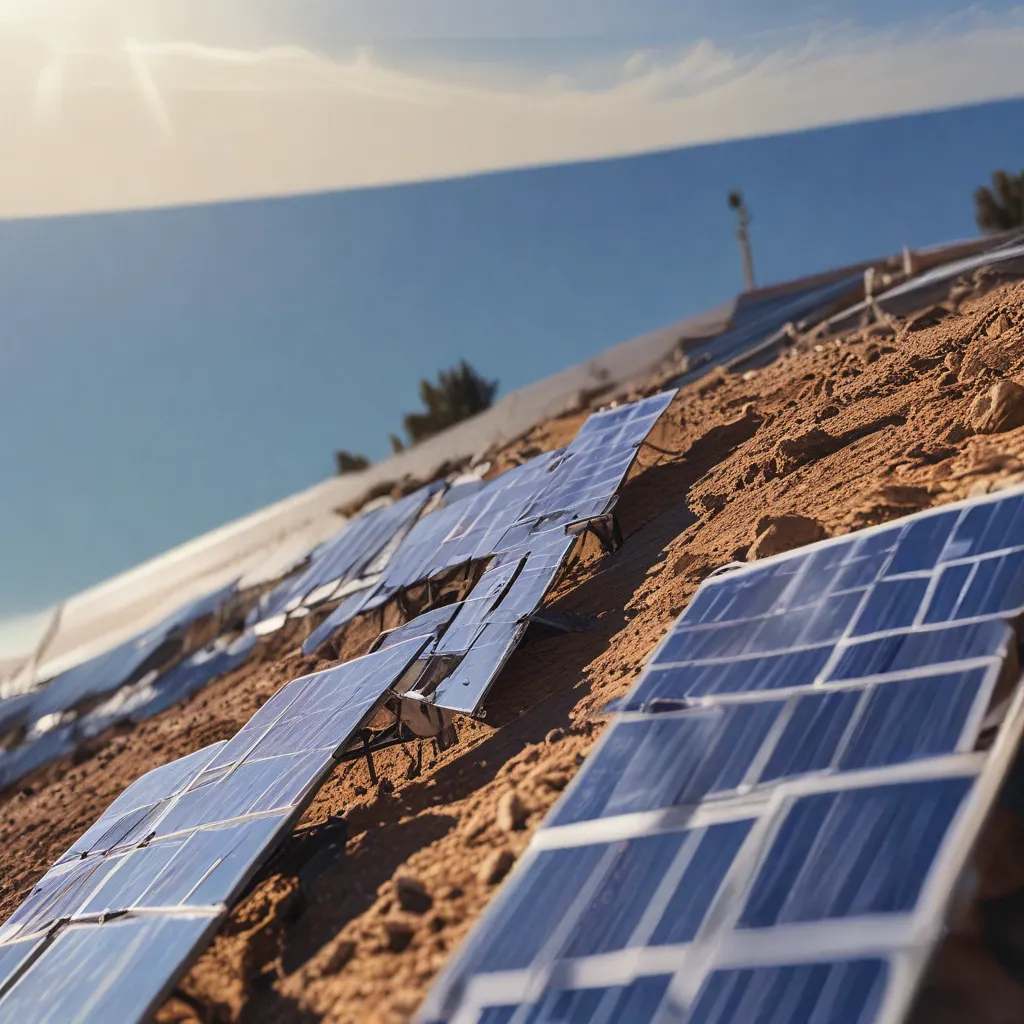
Navigating the Maze of Solar Interconnection: A Guiding Light for Your Sustainable Journey
Ah, the solar interconnection process – the bane of many a solar enthusiast’s existence. It’s a labyrinth of paperwork, regulations, and utility company requirements that can leave even the most determined homeowner feeling lost and frustrated. But fear not, my friends, for I am here to demystify this process and guide you through the maze with all the grace and finesse of a seasoned solar ninja.
You see, I’ve been down this road before. I once found myself staring down a stack of forms taller than my cat, wondering if I’d ever see the light at the end of the tunnel. But with a little persistence, a dash of creativity, and a whole lot of caffeine, I managed to navigate the system and get my solar panels up and running. And now, I’m here to share my hard-earned wisdom with you.
Understanding the Utility’s Role: Partnering for a Brighter Future
First and foremost, let’s talk about the utility company. These guys are the gatekeepers of the grid, the keepers of the power, and the ones who ultimately have to give you the green light to start generating your own electricity. And let me tell you, they can be a tricky bunch to deal with.
But here’s the thing – they’re not the enemy. In fact, they can be your biggest allies in this process. Solar AS Systems Inc. has found that by fostering a positive relationship with your utility, you can navigate the interconnection process with far greater ease.
Think about it this way: the utility company is responsible for maintaining the grid and ensuring the safe and reliable delivery of electricity to homes and businesses. When you introduce a solar system into the mix, they have to make sure it doesn’t disrupt that delicate balance. So, they’re going to have a whole bunch of requirements and paperwork that you’ll need to wade through.
But here’s the good news: many utilities are actively embracing the solar revolution and are eager to work with customers to make the process as smooth as possible. By understanding their concerns and working with them, you can turn a potential adversary into a valuable partner in your sustainable journey.
The Interconnection Process: Navigating the Labyrinth
Okay, now that we’ve got the utility company sorted out, let’s dive into the interconnection process itself. It can be a daunting task, but with the right approach, you can conquer it like a boss.
The first step is to familiarize yourself with the specific requirements and procedures in your area. Every utility has its own set of rules and regulations, and they can vary widely from one region to another. As our friends at CleanPower have pointed out, it’s essential to understand the design parameters and technical specifications your utility will be looking for.
One of the key things they’ll want to know is how your solar system will interact with the grid. Will it be feeding excess power back into the network? Or will you be using it primarily for self-consumption? Knowing the answers to these questions will help you tailor your system and application to meet the utility’s requirements.
Next, you’ll need to gather all the necessary paperwork and documentation. This can include things like site plans, electrical diagrams, and proof of insurance. As the folks at Versico Roofing Systems have shared, it’s essential to work with a reputable solar installer who can help you navigate this process and ensure that all the right components are installed.
But the real key to success is to stay organized and persistent. It’s not uncommon for the interconnection process to take several months, and you’ll likely have to jump through a few hoops along the way. But by keeping a cool head and staying on top of the paperwork, you can overcome even the most daunting challenges.
Unleashing the Power of Energy Storage: A Game-Changing Addition
Now, let’s talk about the secret weapon in your solar arsenal: energy storage. This is where things can get really exciting (and a little bit complicated).
As the experts at Energy Toolbase have pointed out, incorporating energy storage into your solar system can open up a whole new world of possibilities. With a battery backup, you can store excess solar energy and use it to power your home during non-sunny hours or even during grid outages.
But here’s the catch: the utility company is going to have a thing or two to say about how you use that stored energy. They’ll want to make sure it’s not disrupting the flow of electricity on the grid and that it’s being used in a way that aligns with their policies and regulations.
That’s where the interconnection process gets even more intricate. You’ll need to work closely with your utility to ensure that your energy storage system is properly integrated and that you’re following all the necessary procedures. It’s a delicate dance, but with the right guidance and a willingness to collaborate, you can make it work.
Embracing the Future: A Sustainable, Empowered Tomorrow
As you navigate the solar interconnection process, remember that you’re not just connecting your home to the grid – you’re becoming a key player in the sustainable energy revolution. By harnessing the power of the sun and integrating it seamlessly with the utility system, you’re helping to build a cleaner, more resilient future for us all.
So, take a deep breath, put on your problem-solving hat, and get ready to tackle this challenge head-on. With the right mindset, the right tools, and the right partners by your side, you can conquer the solar interconnection process and emerge as a true renewable energy champion.
And who knows, maybe one day you’ll be the one sharing your hard-earned wisdom with the next generation of solar enthusiasts, guiding them through the maze and inspiring them to reach for the stars (or, you know, the sun).


